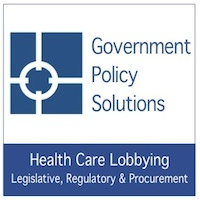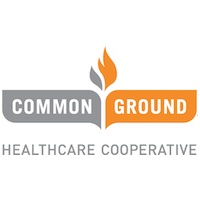
Wisconsin hospitals expect IV fluid shortage to last months

Wisconsin hospitals are expecting intravenous and other fluid shortages to last months as a major manufacturer works to bring a North Carolina plant back online after damage by Hurricane Helene.
Baxter International, which makes 60 percent of the IV fluid supply in the U.S., said Thursday it plans to restart production “in the coming weeks” and has activated its global network to increase supply.
The Department of Health and Human Services has taken steps to boost availability too. The state’s congressional delegation on Friday urged further action.
“More must be done to maintain access to this life-saving care,” they wrote President Joe Biden.
Ann Zenk, Wisconsin Hospital Association senior vice president of workforce and clinical practice, said they’re not aware of Wisconsin hospitals delaying procedures due to the shortage. A few Minnesota health systems with a presence in the state initially delayed some scheduled care out of an abundance of caution.
Hospitals have taken steps to conserve supply, like using oral hydration or keeping IV fluids for minor surgeries stored in smaller containers. Zenk expects the shortage to last for months.
Andy Cohen, pharmacy clinical coordinator at Bellin Memorial Hospital Pharmacy, said the shortage has not impacted them as much since they use a supplier other than Baxter. Other systems receive the majority of their IV fluids from Baxter.
“It’s very spotty in terms of the healthcare system impact,” he said. “A lot of it has to do with who that particular healthcare system really relied upon.”
But supply chain disruptions can have “ripple” effects, leading to changes in shipping allocations and cadence since providers serving high-risk populations, like kids, need help, Cohen said.
And many health groups use IV fluids to make medications. Those groups are now moving to use commercially available, ready-to-use formulations, which may lead to shortages for those treatments.
Bellin has a conservation strategy in place. They’ve encouraged providers to avoid pre-spiking IV fluids when patients are heading to surgery; educated physicians about replacing electrolytes orally, rather than intravenously; evaluated how long they hang IV infusion bags; ensured that pharmacists are checking in and reviewing orders for existing IV fluids; and had nurses evaluate whether IV fluids need to be continued at the end and beginning of their shifts.
They’ve taken a close look at medications that are administered with IV fluid bags and established an incident command process, which Cohen is leading, where they’re tracking IV fluids across the system.
Cohen anticipates the strategy to last until the end of the year as it’ll take time for Baxter to rebuild and because health systems are now “reactive” to the market.
“Anytime new IV fluids are out there, people are going to be hoarding them and buying them up very quickly,” he said. “That usually stays in place for a period of time because they are so conditioned now to be very worrisome about the market shortage.”
Cohen said they’re also learning from previous IV fluid shortages. In 2017, Hurricane Maria hit Puerto Rico, where many manufacturers are located.
Bridget Pfaff, clinical operations director at Gundersen Health System, said while they do not use IV fluids from Baxter’s plant, they do use peritoneal dialysis fluid. Peritoneal dialysis is a kind of dialysis where patients with a catheter inside their abdomen receive treatment at home.
“We’re evaluating each patient on a case-by-case basis,” Pfaff said. “At this point, there’s not an alternative to the product from Baxter that’s available to us.”
They’re looking at ways to stretch the supply, with hopes that Baxter may be able to provide them with product they make in another country, she said.
Other health systems are conserving fluids too, like SSM Health and Children’s Wisconsin. Mayo Clinic Health System has teams reviewing its inventory to assess and mitigate the potential effect of shortages.
“Mayo Clinic has implemented conservation measures for all IV and peritoneal dialysis solutions to ensure uninterrupted patient care,” spokesman Dan Lea said. “Mayo Clinic continues performing procedures, including surgeries, as scheduled.”
UnityPoint Health-Meriter spokeswoman Nicole Aimone said they’re taking “proactive measures,” with clinical and supply chain leaders working together to implement conservation measures and ensure the delivery of safe patient care.
“UW Health continues mitigation efforts to conserve fluids and explore alternate suppliers and options,” spokeswoman Emily Greendonner said Friday. “At this time, there is no impact to scheduled procedures. But with the high demand for our services, it is important that actions are taken to quickly increase available supply.”
Hospital Sisters Health System said in a statement it has not experienced any disruption to patient care and is “taking all necessary steps to mitigate the impacts of this temporary supply shortage.”
“We are closely monitoring our IV fluid inventory and planning for any supply disruption so we can continue to provide safe, high-quality care,” Froedtert ThedaCare Health spokeswoman Gerry Steele said Friday. “Our current supply of IV fluids is meeting the needs of our patients.”
Kara Sankey, Mercyhealth vice president, said Sunday they are closely monitoring the situation, “which continues to change by the hour.”
“We are working with our distributors to ensure we have the most up-to-date information and are evaluating all the various supply options available to us,” Sankey said.
Zenk said other affected products include total parenteral nutrition, a way of providing nutrition through a vein, and fluids used for sterile irrigation procedures.
Adding those, along with peritoneal dialysis fluid, to a designated shortage list that now includes IV fluids would give more flexibility to hospitals. Expanding expiration dates for IV products and lifting importation restrictions could help too, she said.
WHA sent a letter to Biden last week urging immediate action to increase IV fluid supply.
Zenk also called for diversifying suppliers, reforming regulations and exploring ways for state and federal governments to create rotating stockpiles of essential products.
“This isn’t our first rodeo with IV fluid shortages,” she said. “We need some longer-term actions to create, truly, a sustainable and stable supply.”
This article first appeared in the Wisconsin Health News daily email newsletter. Sign up for your free trial here.












.jpg?bwg=1612548324)

















